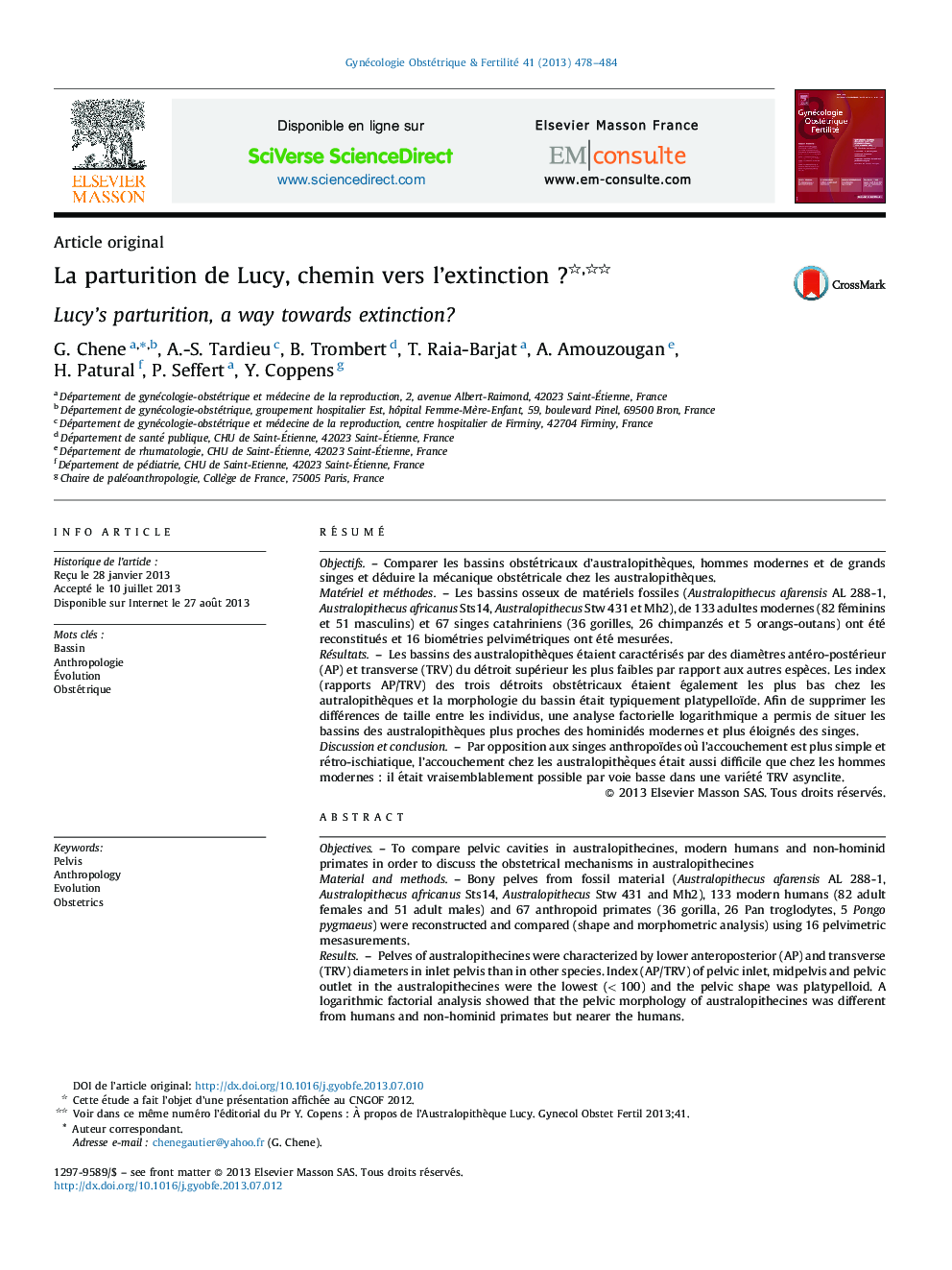| کد مقاله | کد نشریه | سال انتشار | مقاله انگلیسی | نسخه تمام متن |
|---|---|---|---|---|
| 3951617 | 1254879 | 2013 | 7 صفحه PDF | دانلود رایگان |

RésuméObjectifsComparer les bassins obstétricaux d’australopithèques, hommes modernes et de grands singes et déduire la mécanique obstétricale chez les australopithèques.Matériel et méthodesLes bassins osseux de matériels fossiles (Australopithecus afarensis AL 288-1, Australopithecus africanus Sts14, Australopithecus Stw 431 et Mh2), de 133 adultes modernes (82 féminins et 51 masculins) et 67 singes catahriniens (36 gorilles, 26 chimpanzés et 5 orangs-outans) ont été reconstitués et 16 biométries pelvimétriques ont été mesurées.RésultatsLes bassins des australopithèques étaient caractérisés par des diamètres antéro-postérieur (AP) et transverse (TRV) du détroit supérieur les plus faibles par rapport aux autres espèces. Les index (rapports AP/TRV) des trois détroits obstétricaux étaient également les plus bas chez les autralopithèques et la morphologie du bassin était typiquement platypelloïde. Afin de supprimer les différences de taille entre les individus, une analyse factorielle logarithmique a permis de situer les bassins des australopithèques plus proches des hominidés modernes et plus éloignés des singes.Discussion et conclusionPar opposition aux singes anthropoïdes où l’accouchement est plus simple et rétro-ischiatique, l’accouchement chez les australopithèques était aussi difficile que chez les hommes modernes : il était vraisemblablement possible par voie basse dans une variété TRV asynclite.
ObjectivesTo compare pelvic cavities in australopithecines, modern humans and non-hominid primates in order to discuss the obstetrical mechanisms in australopithecinesMaterial and methodsBony pelves from fossil material (Australopithecus afarensis AL 288-1, Australopithecus africanus Sts14, Australopithecus Stw 431 and Mh2), 133 modern humans (82 adult females and 51 adult males) and 67 anthropoid primates (36 gorilla, 26 Pan troglodytes, 5 Pongo pygmaeus) were reconstructed and compared (shape and morphometric analysis) using 16 pelvimetric mesasurements.ResultsPelves of australopithecines were characterized by lower anteroposterior (AP) and transverse (TRV) diameters in inlet pelvis than in other species. Index (AP/TRV) of pelvic inlet, midpelvis and pelvic outlet in the australopithecines were the lowest (< 100) and the pelvic shape was platypelloid. A logarithmic factorial analysis showed that the pelvic morphology of australopithecines was different from humans and non-hominid primates but nearer the humans.Discussion and conclusionIn contrast with apes where obstetrical mechanics seem to be easier, and because of platypelloidy, mechanism of birth in australopithecines was as difficult as in modern homo sapiens. Birth without cesarean was probably possible in an asynclitic TRV orientation.
Journal: Gynécologie Obstétrique & Fertilité - Volume 41, Issue 9, September 2013, Pages 478–484